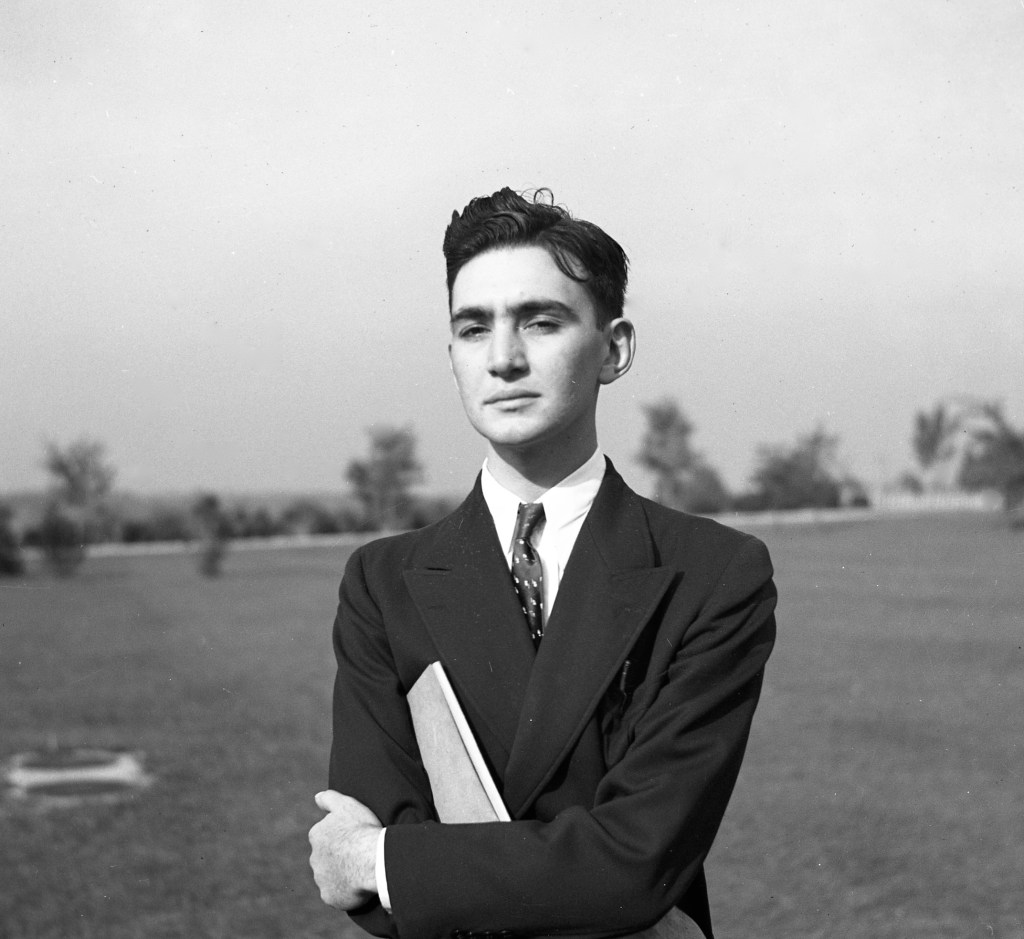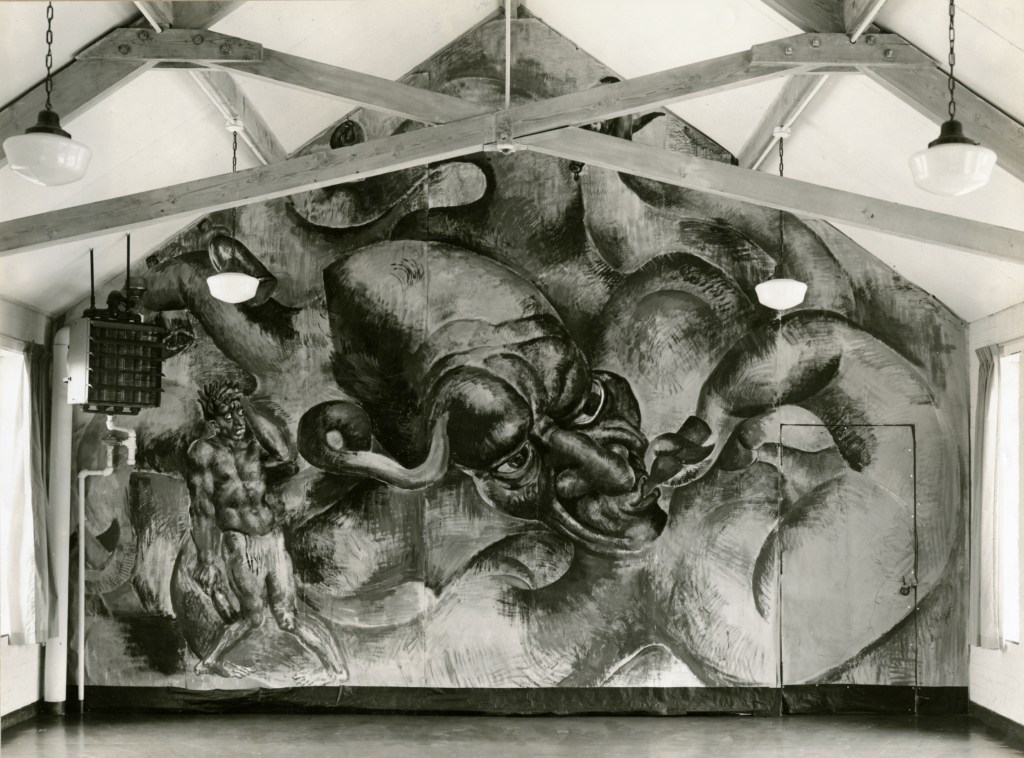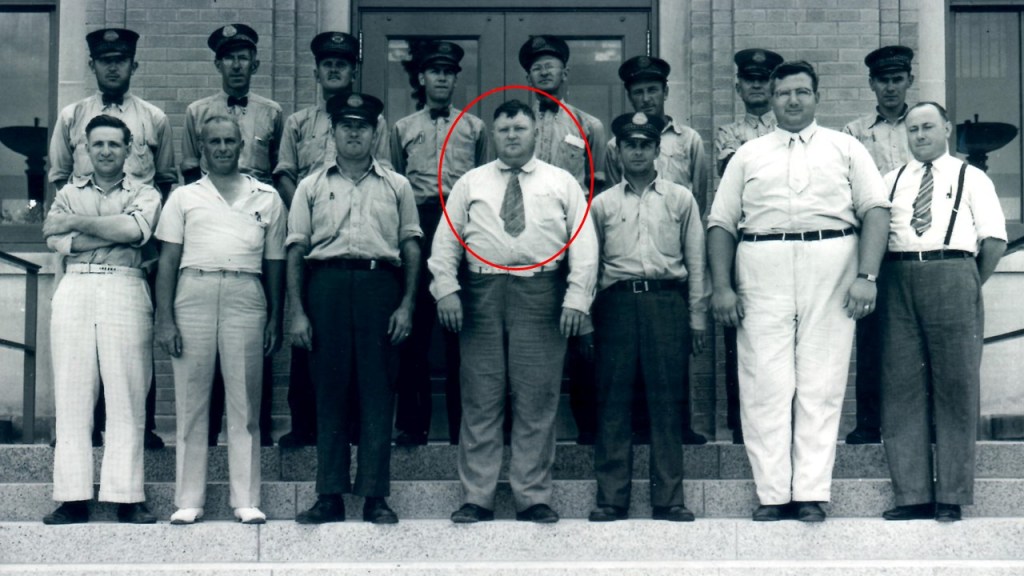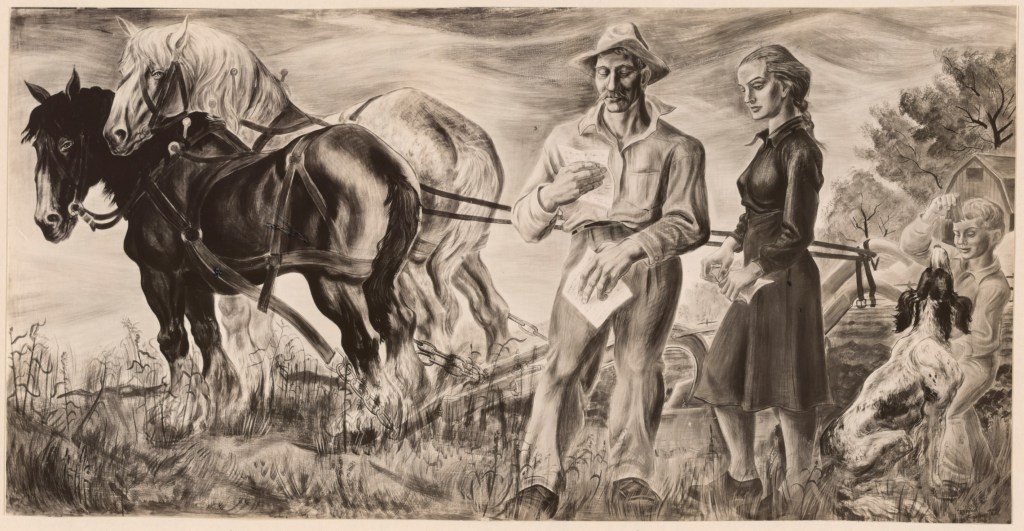On the eve of World War II, while Americans continued to suffer from the economic fallout of the Great Depression, the United States Treasury Department’s “Section of Fine Arts” commissioned Zoltan Sepeshy, the Head of the Painting Department at Cranbrook Academy of Art, to paint a mural for a new post office in downtown Caro. At the same time, one of his star students, David Fredenthal, was commissioned to paint a mural for the new post office in Lincoln Park. (Having trouble placing Caro, if not also Lincoln Park, on a map of Michigan? For your first geography lesson, place your right hand, palm side up, next to you. Caro is located in the middle of your thumb, while Lincoln Park is closer to your wrist.)
Separate and distinct from the more extensive and influential WPA or Works Progress Administration’s “Federal Arts Project,” which essentially was a work-relief program for artists, the purpose of the Treasury Department’s “Section” program, as it came to be known, was “to secure for the Government the best art which this country is capable of producing, with merit as the only test.” Sepeshy and Fredenthal, with their recently minted Cranbrook credentials, fit the bill. Fredenthal even had some mural experience, having recently painted an octopus mural for the Academy’s now infamous Crandemonium Ball in 1936.
Meanwhile, Jimmy Southers, Lincoln Park’s postal superintendent, was more than a little perplexed and worried about the mural David Fredenthal was to paint for his post office. The week of September 25, 1939, Southers received a letter from Washington notifying him that Fredenthal, who the government described as a “sensational young artist” from Cranbrook Academy of Art, had been named to paint the mural—a fresco no less. Southers, who more than likely had not paid a visit to the seven-year-old Academy in Bloomfield Hills, not only had no idea what a fresco painting was but was intimidated by the government’s suggestion that he was to confer with the artist about the subject matter. His big idea? He thought a mural showing all of Lincoln Park’s postal superintendents (no doubt with him in a position of prominence) would do just fine.
Fortunately for Southers, geography intervened. Pulling out his own map of Michigan, Sepeshy did some calculations (which I just repeated using Google Maps). Realizing that Caro was some seventy-two miles from his studio in Bloomfield Hills while Lincoln Park was just twenty-six, the Hungarian painter decided to pull rank. He had the commissions switched and assigned the Caro project to his student while he decided to paint the mural in Lincoln Park, a few miles south of Dearborn.
While Southers no longer needed to know the ins and outs of frescoes, he now was faced with the equally daunting challenge of learning about Sepeshy’s famous egg tempera technique—leading the Ecorse Tribune to pen the headline “Omelets Make Best Murals” (April 11, 1940). But I digress. The story of Sepeshy and his mural for the Lincoln Park Post Office—including the artist’s egg tempera formula, the mural’s eventual relocation to an island in the middle of Lake Michigan in a building built by King James Strang, and its return to Detroit last year for a thorough conservation treatment—is one that I and others will be telling this Sunday, live from the conservation studio of Kenneth Katz in Detroit and the Mormon Print Shop Museum on Beaver Island.

The title of Fredenthal’s mural for the post office in Caro, which he completed in 1941, is Mail on the Farm. It’s a subject that likely was assigned to him by the Treasury Department, if not the postal superintendent. The artwork of the post office murals around the nation typically reassured citizens that all would be well again, despite several years of Depression conditions. One scholar, Carolyn Damstra, has noted that “Postal-themed artwork in particular shows the mail service as one positive, reliable aspect of American life.”
Of course, each artist also wanted to leave their mark on the project. It wasn’t just about the money—for most murals, the artist received a whopping $700 for what often took the better part of a year to create. What’s interesting about Fredenthal’s mural is not simply the young couple on the farm, reading a recently delivered letter (from the USPS, not UPS or Amazon Prime…), but the horses off to the side. They seem a little frisky to my eye, engaging in their own intimate relationship.

By December 1942, near the end of the “Section” program in 1943, the Treasury Department had spent about $1.8 million on 1,047 murals and 268 sculptures for hundreds of post offices around the country and federally-owned structures in Washington, D.C. In Michigan alone, there were at least forty-eight post office murals, including a second one by Fredenthal in Marquette in the Upper Peninsula. (For your second geography lesson, take your left hand, also placing it palm side up, with tip of its pinkie not quite touching the tip of your right hand’s middle finger, which is where the Mackinac Bridge is located, and you will find Marquette by the base of your left thumb.)
While I cannot vouch for the one in Marquette, a pre-pandemic road trip to Caro found its mural in great condition in the downtown post office. As for the Lincoln Park mural, a depiction of three brawny fishermen Hauling in the Net, I hope you will join me on Sunday afternoon for my conversation with Kenneth Katz about its recent year-long conservation treatment. It will be your last chance to see it (and literally Zoom in on its lush details) before it heads back up to Beaver Island later in the week.

See you on Sunday!
—Gregory Wittkopp, Director, Cranbrook Center for Collections and Research
Discover more from Cranbrook Kitchen Sink
Subscribe to get the latest posts to your email.







Where at Cranbrook are the 1st and 3rd pictures taken?
Julie Montgomery
Cranbrook Academy of Art
Budget and Facilities Support Assistant
JMontgomery@cranbrook.edu
248-645-3166
LikeLike
Julie: The photo with Sepeshy and his students is in the current Painting Department building. Based on where the door is located, I am thinking it is on the second floor, in the space at the northwest end of the department. But I would have to compare the photo while in the space. As for the location of the Crandemonium mural, I am not certain. I am not immediately recognizing the rafters. Kevin might know. Greg
LikeLike
Gregory….excellent post. I reposted on my Michigan Thumb focused site @ ThumbWind.com
LikeLike
Pingback: Caro Michigan Post Office "Mail On the Farm" Mural • Thumbwind